Clients of the Cherokee Nation Harm Reduction Program receive a lock pouch containing Naloxone, new syringes and wound care supplies. (Photo/Shane Brown)
ROLLING HOPE
Cherokee Nation’s Mobile Clinic Pioneers Indigenized Harm-Reduction and Addiction Care
by Elyse Wild
Photography by Shane Brown, a citizen of the Cherokee Nation
This story was produced in partnership and co-published by Native News Online and The Guardian.
TAHLEQUAH, Okla. —Twice a week, Coleman Cox (Cherokee) drives a white sprinter van full of life-saving supplies along winding rural Oklahoma roads from Tahlequah, the capital of the Cherokee Nation, to Vinita, a town of 5,000 about 70 miles north. It’s a hot spot for drug use in the northern part of the reservation.
Cox, who’s 38, is the director of the Cherokee Nation Harm Reduction Program, an evidence-based public health strategy designed to mitigate the adverse effects of drug use, such as infectious diseases, overdose, and death. The mobile unit was launched in September 2023 to bring harm-reduction supplies to remote areas of the reservation. Vinita is its first distribution site.
It’s an unseasonably hot day for November in Oklahoma. Cox parks the van in the alleyway behind the Vinita Potters Guild, as he does every Tuesday and Thursday. Then he sets up a folding table with black bins of Naloxone, a drug to reverse opioid overdoses, along with testing strips, clean syringes, and wound-care supplies. The mobile unit typically sees 16 repeat community members, he says. Some days, no one comes. It all depends on the patterns of drug use and the drug current drug supply.
“It’s feast or famine,” Cox says. “That’s why it’s important to know how people use.
He goes on to describe how typically someone using intravenous methamphetamine uses up to 10 syringes a day; an intravenous heroin user up to four; and fentanyl users up to 30. Knowing what the local drug supply looks like and how many syringes someone needs can keep them from reusing or sharing needles — and spreading infectious disease — or going into withdrawals in an unsupervised environment.
Cox looks like an average American dad: He wears a baseball hat, a flannel shirt, and a warm smile. He is possessed by the energy of a parent with a young, busy family whose days are filled with after-school activities and sports practices.
Cox picks up a packaged syringe and explains that they carry several sizes, as different intravenous drugs have various levels of viscosity. Using the wrong size can lead an injection site to become infected. So far, the mobile unit has distributed more than 600 clean syringes. He hopes they can start providing intravenous Naloxone, which is cheaper than the common nasal spray variety.
A stack of shiny folders that Cox sets out contains information on how to administer Naloxone to someone who is overdosing, and how to angle a syringe to reduce skin tearing and infection. Prominently featured is a message Cherokee Nation wants to send to its members who use drugs:
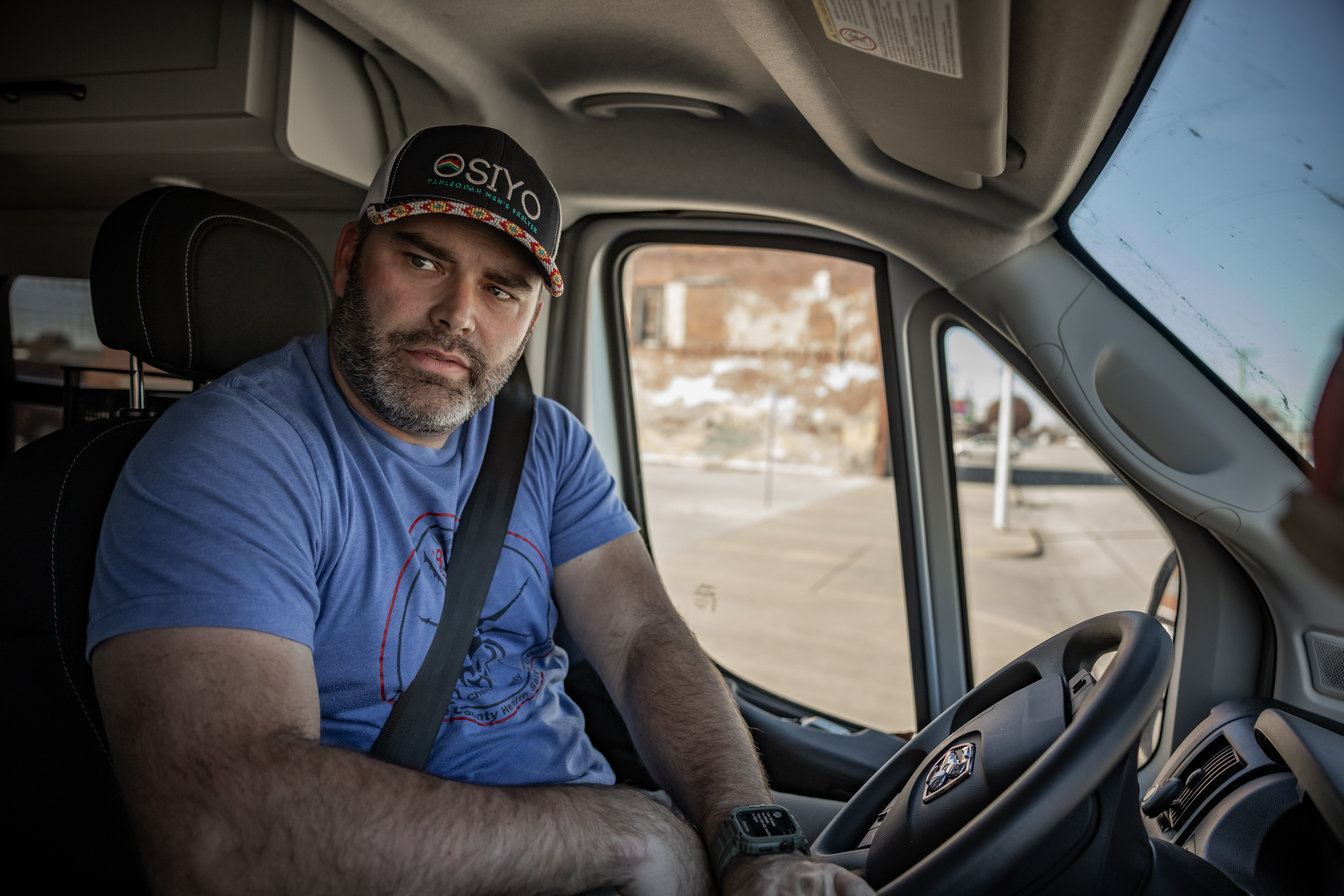
Cherokee Nation Harm Reduction Director Coleman Cox parks a mobile harm reduction unit, housed in a white Sprinter van, in an alleyway in Vinita, Oklahoma, on the Cherokee Nation Reservation. (Photo/Shane Brown)
“We hold you sacred and wish to give you the respect you deserve.”
It’s a sentiment the Cherokee Nation is weaving through its $100 million strategy to reduce opioid overdoses on the reservation, funded in part by the tribe’s landmark 2017 lawsuit against opioid manufacturers and distributors.
The van is just one part of the tribe's investment in harm reduction and addiction health care centered around Cherokee culture.
MORE THAN TWICE AS LIKELY TO DIE OF OVERDOSE
Like the rest of Indian Country, the Cherokee Nation is on the frontlines of the current opioid epidemic. Addiction experts say it is in its fourth wave in the past 25 years, beginning with prescription opioids in the late 1990s, a resurgence of heroin around 2010, and, in the last 10 years, heroin being mixed with fentanyl, a highly lethal synthetic opioid that is as much as 50 times as strong as heroin. Fentanyl is now increasingly found in non-opioid drugs such as cocaine and methamphetamine, which is driving up overdoses among users of those drugs.
More than 103,000 Americans died in opioid-related incidents in 2022, According to the federal Centers for Disease Control and Prevention, opioid-related overdoses have tripled since 2000. According to data compiled from the CDC, the Indian Health Service, the National Institute on Drug Abuse, and various state health departments, Native Americans are 2.6 times more likely to die of an overdose than white Americans.
The wounds inflicted by colonialism, the violent removal of tribes from their ancestral lands, generations of forced assimilation via federal Indian Boarding Schools, and broken treaty promises have left Indian Country with disproportionately high rates of depression, anxiety and suicidal ideation — and especially vulnerable to the effects of the opioid crisis.
“For so many Indigenous people, when we reflect on substance use in our lives as individuals and community members, all of these pieces contribute to substance use,” Andrea Medley (Haida Nation), a research associate at the Center for Indigenous Health at the Johns Hopkins Bloomberg School of Public Health in Baltimore, told Native News Online.
In 2017, the Cherokee Nation became the first tribe to file a lawsuit against opioid manufacturers and distributors for promoting the flow of prescription opioids into its community. The lawsuit, which was settled in 2021 with a $75 million payout to the Cherokee Nation, alleged that in just one year, nearly 800 kilograms of opioids—enough for almost 10 million pills at oxycodone’s highest strength—were distributed within the reservation.
That suit became the blueprint for the Tribal Opioid Lawsuit that resulted in a $590 million settlement in 2022 between the nation’s largest makers and distributors of opioids, including pharmaceutical giant Johnson & Johnson, and the nation’s 574 federally recognized tribes.
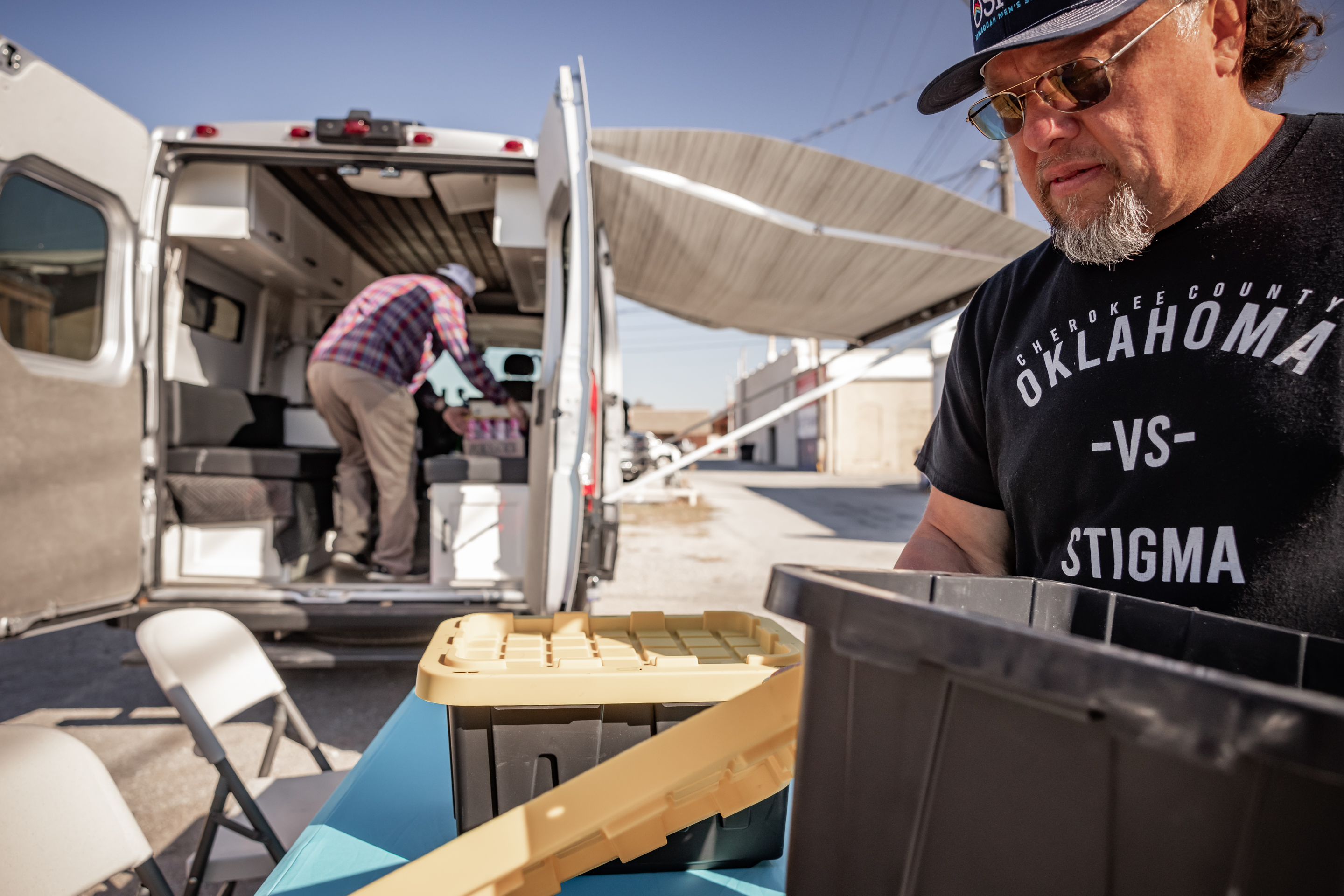
Cherokee Nation Harm Reduction Program provides supplies — such as clean syringes, overdose reversal drug Naloxone and testing strips — to drug users in the community to offset the negative effects of drug use. (Photo/Shane Brown)
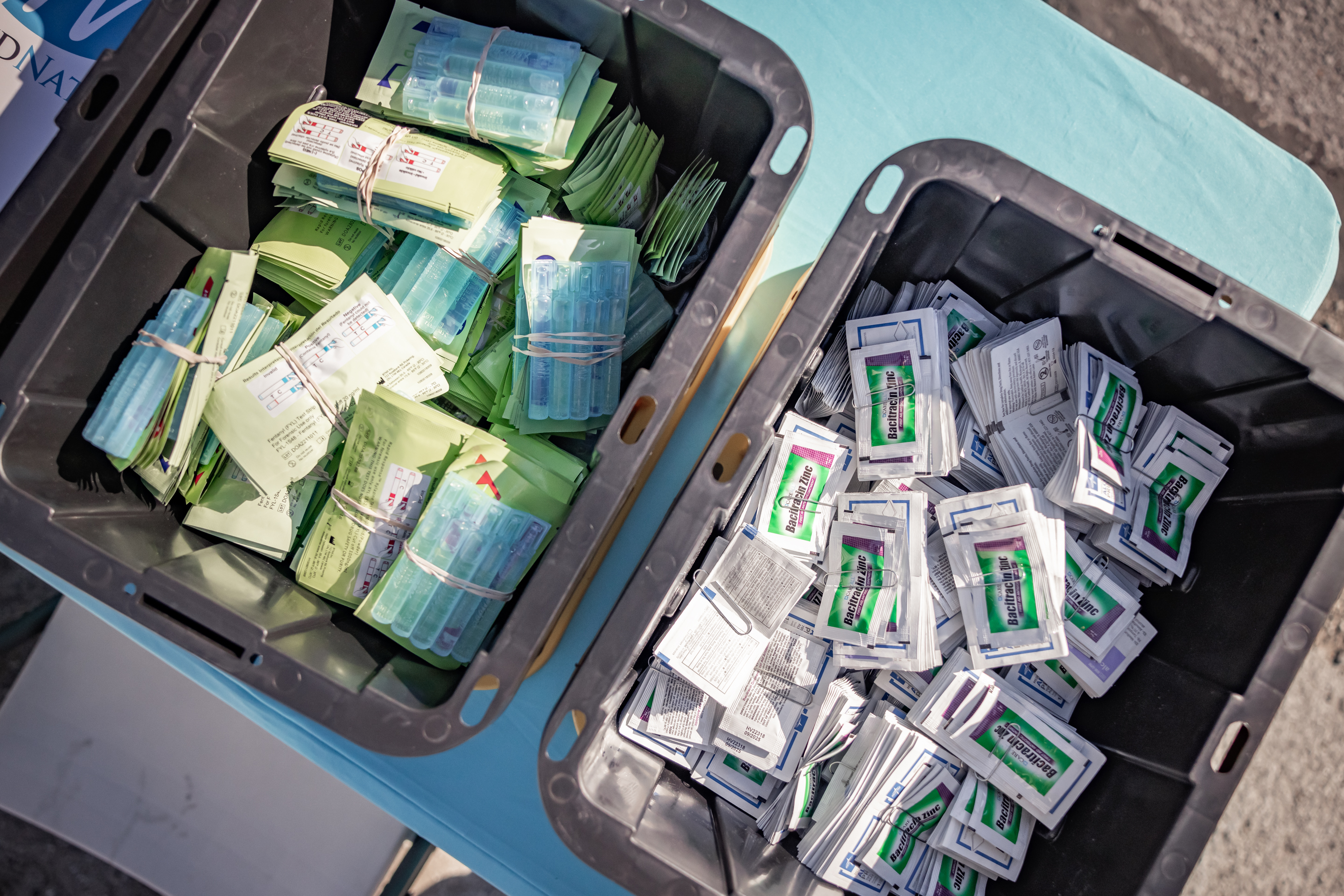
The sprinter van carries bins full of fentanyl testing strips, wound care supplies,clean syringes and Naloxone to distribute in a hot spot for drug use on the Cherokee Nation reservation. (Photo/Shane Brown)
Now, armed with the settlement funds, tribes across Indian Country are launching their own treatment programs incorporating their culture and values, a strategy sometimes referred to as “Indigenizing” addiction care and harm reduction.
Cherokee Nation is the largest of the tribes, with more than 450,000 citizens worldwide and 141,000 people living within its sovereign boundaries, which span 14 counties and 6,900 square miles in northeast Oklahoma.
Mobile harm reduction is uniquely suitable for Tribal Nations, which are often rural, geographically isolated, and without easily accessible addiction care. For many Native communities, where culture and connection are measures of health, harm reduction mitigates the isolation of active addiction.
"Doing it [recovery] in isolation on your own may be physically possible, but we need to grow well in community,” Cox said. “Native people heal as a community."
‘NATIVE PEOPLE TAKING CARE OF NATIVE PEOPLE’
For the Cherokee Nation, a critical piece of creating addiction recovery programs that fit people’s cultural needs is staffing them with tribal members.
This year, the tribe launched a $5 million educational endowment for tribal members to obtain master’s degrees in culturally focused behavioral health at Northeastern State University in Tahlequah. Graduates of the program then go on to work for the tribe’s behavioral-health programs.
“We value our partners with federal agencies and with the private sector, but I think to the greatest extent possible, Native people taking care of Native people is the best approach,” Cherokee Nation Principal Chief Chuck Hoskin, Jr., said.
Evidence for the effect of culture on addiction health in Native communities is not purely anecdotal. A doctoral research project conducted by the University of Arizona in 1992 with the Shuswap First Nation Community in Alkali Lake, British Columbia, found that employing substance abuse treatment with cultural practices such as sweat lodges, pipe ceremonies, drumming, singing, and powwows were instrumental in reducing the tribe’s rate of drug and alcohol abuse by 95 percent from 1970 to 1985.
Cherokee Nation’s Medication Assisted Treatment program supports individuals in recovery with medications — methadone or buprenorphine are common for people addicted to opioids — and counseling. Patients are offered a Cherokee cultural-wellness curriculum designed by cultural activist Abraham Bearpaw (Cherokee) and licensed psychologist Jennie Barnes (Cherokee) called “Walking in Balance.”
Bearpaw, who was raised with traditional Cherokee teachings and has been in addiction recovery for 11 years, developed Walking in Balance nine years ago when he noticed a lack of Native people in recovery groups he attended.
Common principles of addiction recovery, Bearpaw says, such as mindfulness, gratitude, and self-care, have roots in traditional Cherokee ceremonies, but they aren’t often presented that way to Cherokee people in recovery.
“All of these things are taught in our ceremonial ways,” Bearpaw said. “A lot of people misunderstand what Cherokee culture is about. We might be making a doll or a basket, but we’re really practicing mindfulness if we do these things as they are intended.”
“In our ceremonies, we’re in the woods singing and dancing and praying around a fire. What we are actually doing is letting go of resentment, praying for connection, for gratitude.”
Ashley Lincoln (Cherokee), a clinical administrator for the medication-assisted program, said when introducing cultural components of treatment to patients, staff at the center meet them wherever they are.
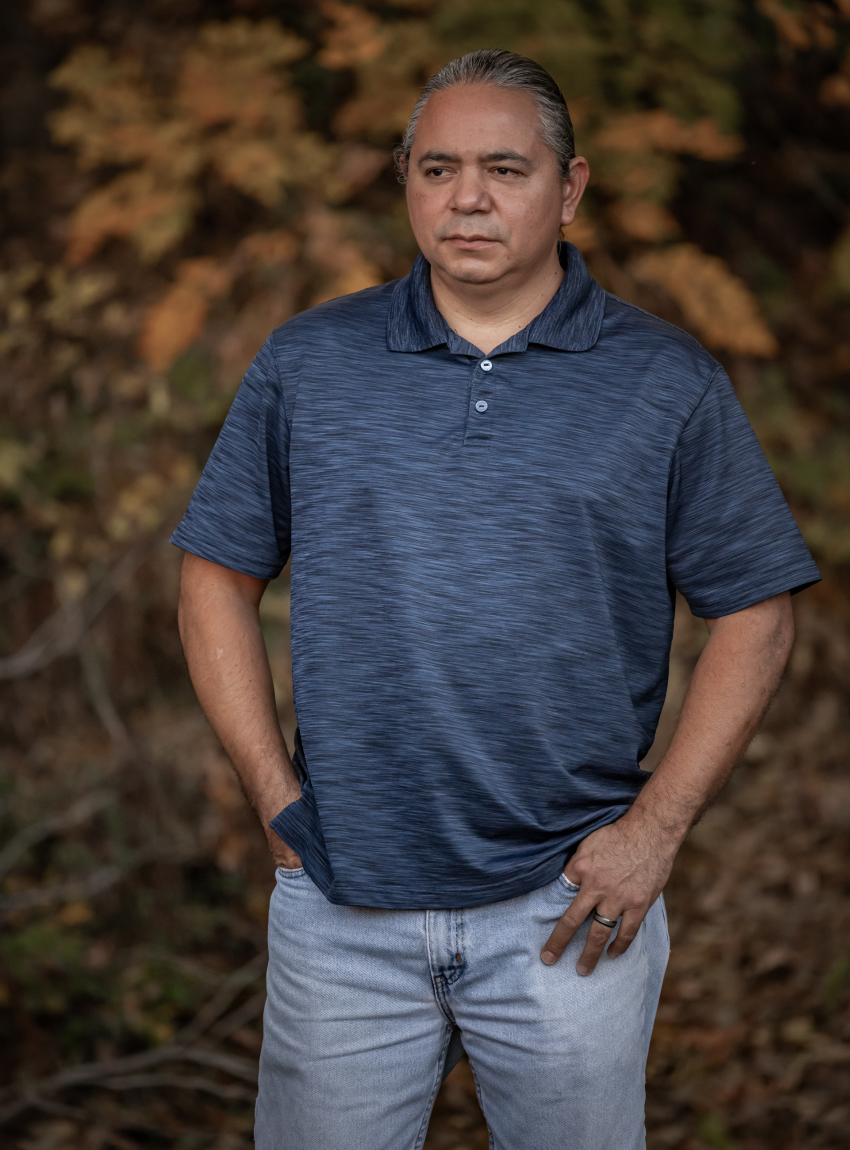
Cherokee Nation Citizen Abraham Bearpaw created a Cherokee cultural wellness curriculum that is offered to Cherokee Nation citizens in the tribe's Medication Treatment. Program. (Photo/Shane Brown)
“You have patients who are really connected to their culture and very traditional practices, and then, those who are not connected, but they desperately want that,” Lincoln said. “We always talk about when we introduce those cultural aspects; it's like their spirit remembers it, because they pick it up immediately and they crave it, and it does something for them. It helps them heal.”
STOMP DANCE
Jennifer Peña-Lasiter, a citizen of the Cherokee Nation, became addicted to opioids in 2005 at age 20 after she was prescribed Percocet— a highly addictive prescription opioid used to relieve moderate or severe pain — for a back injury she sustained from a car accident.
She went from a young, devoted mother and college student studying psychology to spending her days in the waiting rooms of pill mills, which are run by doctors who indiscriminately prescribe opioids in exchange for cash.
Her parents took over custody of her two young sons while she was in and out of prison for crimes she committed to fund her addiction. She became unhoused and lived on the streets of Oklahoma City. Her voice shook as she described carrying a weapon, ready to use it on herself and die by suicide if the police arrested her one more time.
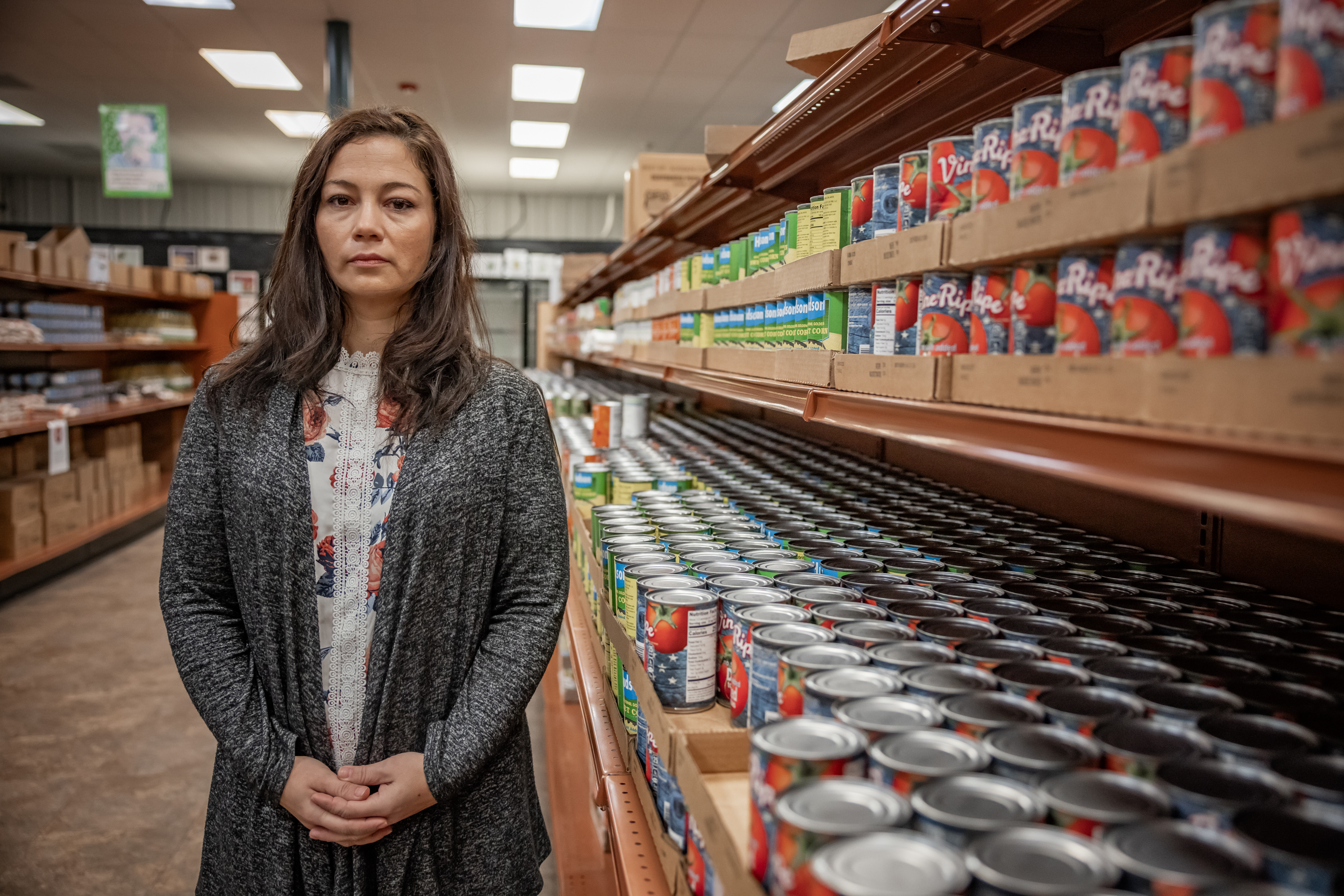
Cherokee Nation Citizen Jennifer Peña-Lasiter became addicted to opioids after she was prescribed Percocet for a back injury. Peña-Lasiter said her connection to culture and tribe have been crucial to her recovery. (Photo/Shane Brown)
“I would look around and think, ‘How did I get here? What happened?’” she said.
After more than a decade in active opioid addiction, Peña-Lasiter entered recovery and took a job stocking shelves at one of Cherokee Nation’s food distribution centers. She was sober, but struggling with the psychological effects of where her addiction had taken her. Then, two of her co-workers, who were traditional practitioners of Cherokee culture, took her to a Stomp Dance.
Stomp Dance is a ceremonial gathering that involves shuffling and stomping movements to songs led by one person in a call-and-response style. Dancers move in a circle around a fire and carry rattles made from box turtle shells, gourds, coconuts, or condensed milk cans. The effect is a powerful, alive symphony of chanting, rattles, and breath. The smoke from the fire carries prayers of redemption, forgiveness and renewal into the heavens.
For Peña-Lasiter, who grew up non-traditional — it was a connection to her culture and tribe that she didn’t realize was missing from her recovery.
"We were dancing around the fire, and I don't know how to explain it," she said. "It was just wholeness and goodness and oneness with my tribe. It was life-changing."
Peña-Lasiter has been in recovery for six years. She is a homeowner and has full custody of her sons. In 2020, she gave birth to a daughter who Peña-Lasiter says has no idea of what her mother's life used to be like.
“My life is amazing now,” Peña-Lasiter said.
She regularly attends stomp dances and brings traditional Cherokee practices into her daily life.
As she looks at the investments the Cherokee Nation is making in helping its community heal, she said: “They pushed those opiates on us really hard. All of these investments are Cherokees doing what Cherokees do… supporting their brothers and sisters and lifting each other up.”
